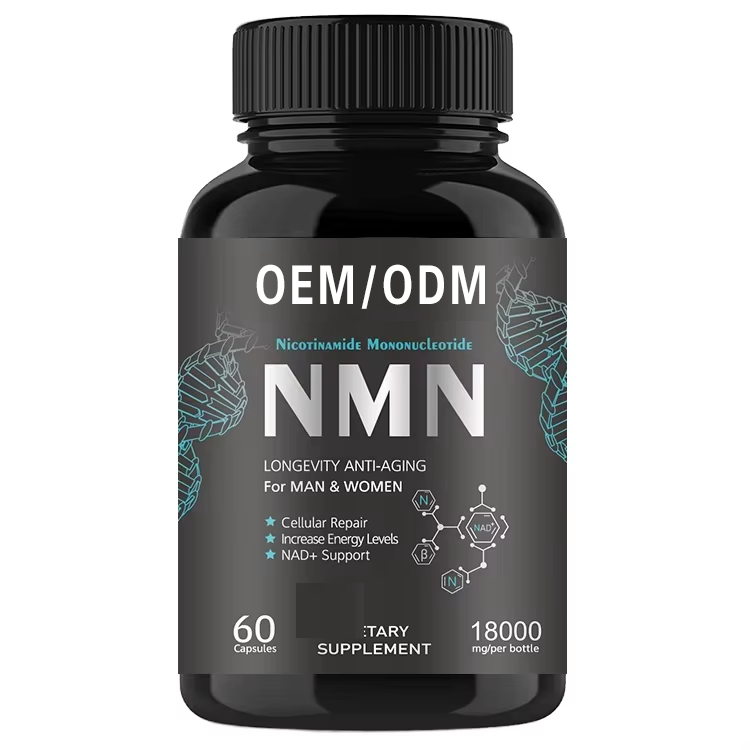–From the Study of Cellular Energy to the Search for Longevity Codes
INTRODUCTION: The “Golden Partner” of NAD+
There has been a lot of research on anti-aging, and a molecule called β-nicotinamide mononucleotide (NMN) has gotten a lot of attention in recent years. Scientists call it the “direct precursor” of NAD+ (nicotinamide adenine dinucleotide). NAD+ is a molecule that plays a key role in maintaining cellular energy and repair mechanisms. As we age, the levels of NAD+ in our bodies drops significantly, and this is linked to a number of age-related diseases. So how exactly does NMN work? What are its potential benefits and limitations?
I. Initiator of the cellular power plant
Mitochondria are the energy factories of the cell. NMN increases the level of NAD+, which activates the key link of energy metabolism.
Accelerated ATP synthesis: NAD+ is involved in the tricarboxylic acid cycle and the mitochondrial respiratory chain, which convert glucose and fat from food into ATP (the energy currency of the cell). Studies have shown that mice given NMN have more ATP in their muscle cells and can exercise for longer.
Mitochondrial Repair: NAD+ helps keep energy metabolism efficient by activating a protein called SIRT3. This protein removes damaged mitochondria and helps create new ones.
To put it simply, NAD+ is like the catalyst that ensures the fuel (in this analogy, the fuel is glucose and fat) is fully burned, while NMN is the “fuel additive” that helps the engine (in this analogy, the engine is the body) run more efficiently.
Ⅱ. The logic behind anti-aging: DNA repair and gene regulation
The main idea of aging is that cells get damaged over time and can’t repair themselves as well as they used to. NMN can help with this process in the following ways:
It activates proteins that help you live longer
NAD+ is important for a group of proteins called Sirtuins. These proteins are known as “longevity proteins” and slow down cellular aging by regulating how our genes are expressed and reducing inflammation and oxidative stress.
Repair of DNA damageThe human body is exposed to DNA breaks caused by UV rays and radiation every day. NAD+ is the core raw material for DNA repair by PARPase, and experiments have shown that cells with high levels of NAD+ are able to repair radiation damage more quickly.
For example, in experiments on animals, when elderly mice were given NMN, the loss of telomeres (the protective structure at the end of chromosomes) was slowed down, and their life expectancy increased by an average of 10%-20%.
III. A “regulator” of metabolic health
Researchers are studying the potential of NMN to improve metabolic diseases.
Diabetes: NAD+ helps control blood sugar by increasing insulin sensitivity and the function of the cells in the pancreas that produce insulin (pancreatic β-cells). In experiments with mice, NMN improved how their bodies processed glucose (sugar) when they ate a lot of fat.
Fatty liver and obesity: NAD+ helps to burn fat and reduce liver fat. Preliminary clinical trials show that NMN may reduce the percentage of visceral fat in obese people.
It also helps to reduce chronic inflammation. NAD+ reduces low-grade inflammation associated with metabolic syndrome by regulating inflammatory pathways such as NF-κB.
IV. It can protect different organs, including the heart and brain.
NAD+ has been shown to reduce oxidative damage to vascular endothelial cells and improve blood flow and vascular elasticity. In models of atherosclerosis, NMN significantly reduced the risk of plaque formation.
The neurological system
NAD+ helps grow new brain cells and changes how their connections work. In mice with Alzheimer’s disease, NMN reduced the build-up of a protein called beta-amyloid in the brain and improved their memory.
Other organs
Vision: The cells in the retina need NAD+ to function well. NMN can help delay age-related macular degeneration.
Hearing: NAD+ keeps the hair cells in the inner ear working well, and experiments with animals suggest that NMN may reduce hearing damage from loud noise.
V. Controversies and Limitations: What Scientists Are Saying
Although the future of NMN looks promising, we should still be careful when using it.
We don’t have enough information from humans: most of the current studies are done on animals, and we don’t know yet how safe it is or what the best dose is.
Individual differences are significant: age, gender, and intestinal absorption ability may affect the effect.
It’s also important to remember that NMN isn’t a magic “longevity drug.” Aging is a complex process, and taking NMN alone won’t reverse all of the signs of aging.
Expert advice: If you’re healthy, you don’t need to take it. But if you’re middle-aged or elderly, or have metabolic issues, you should talk to your doctor first. And stick to buying it from a regular store.
Conclusion: The gap between laboratory research and real-life applications
Research on NMN offers new ideas for anti-aging and preventing chronic diseases, but its true value still needs to be confirmed by large-scale clinical studies. In the future, scientists may develop precise therapies for NAD+ regulation. Until then, maintaining a reasonable diet and regular exercise are still the best ways to slow down aging.




